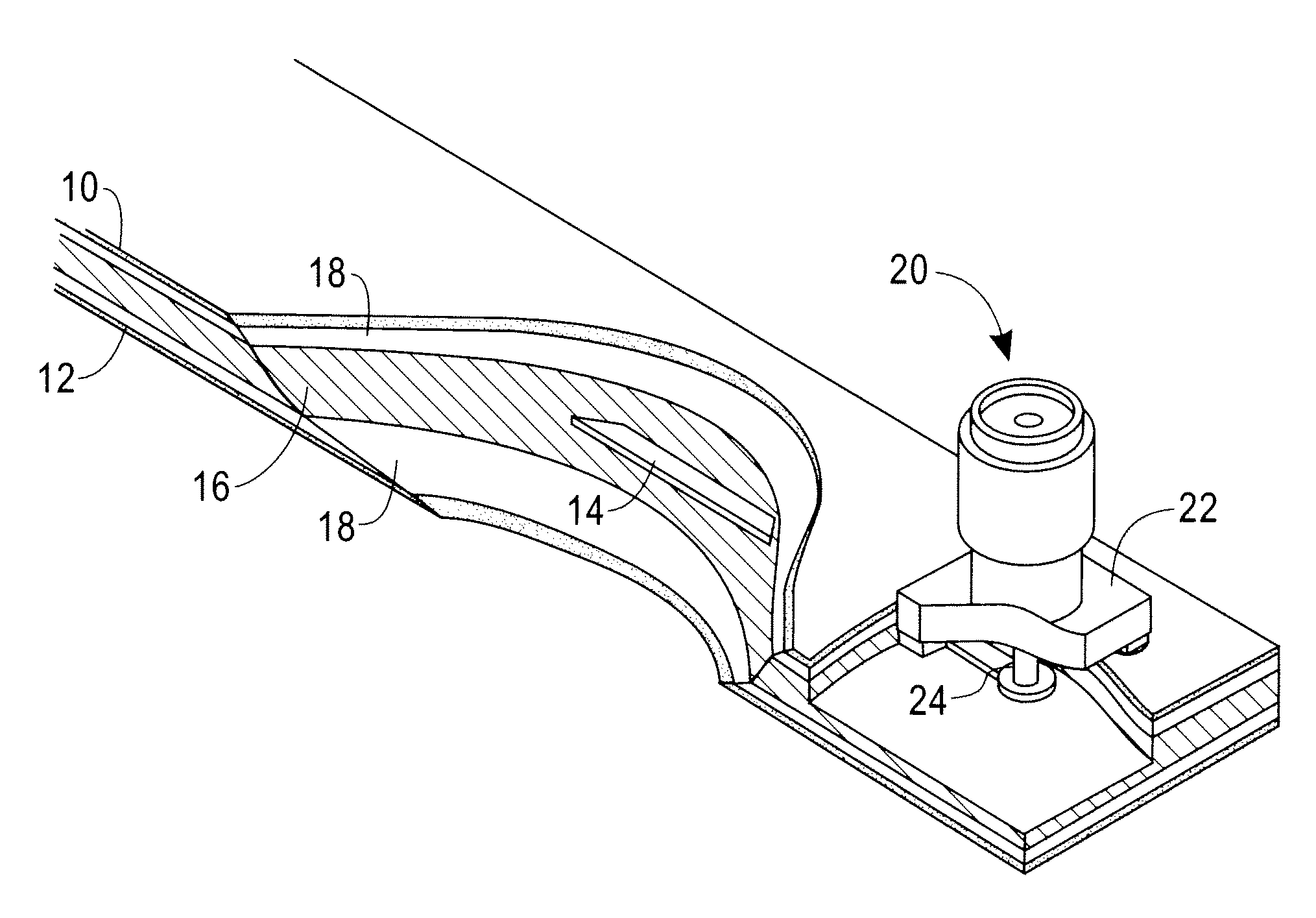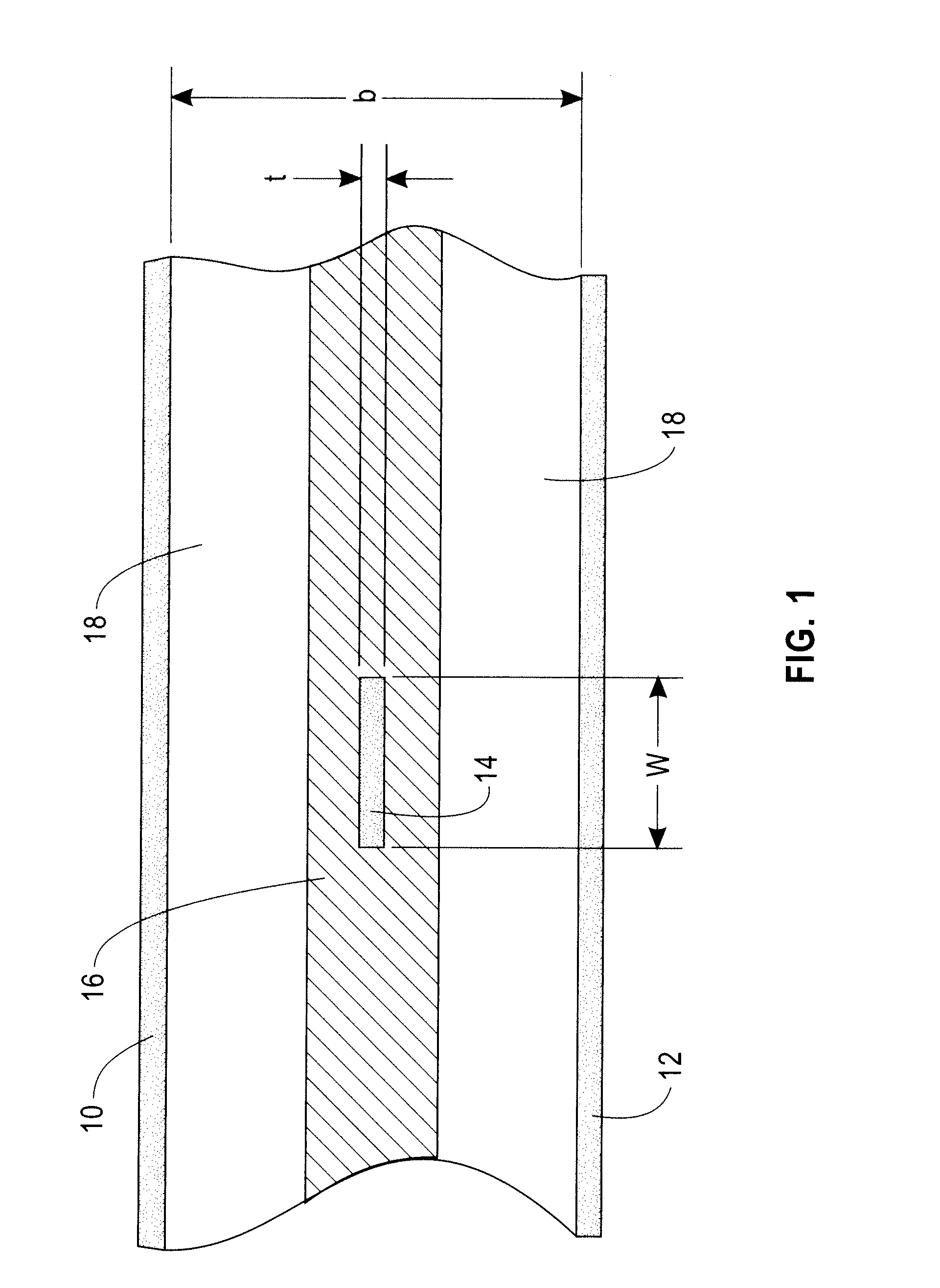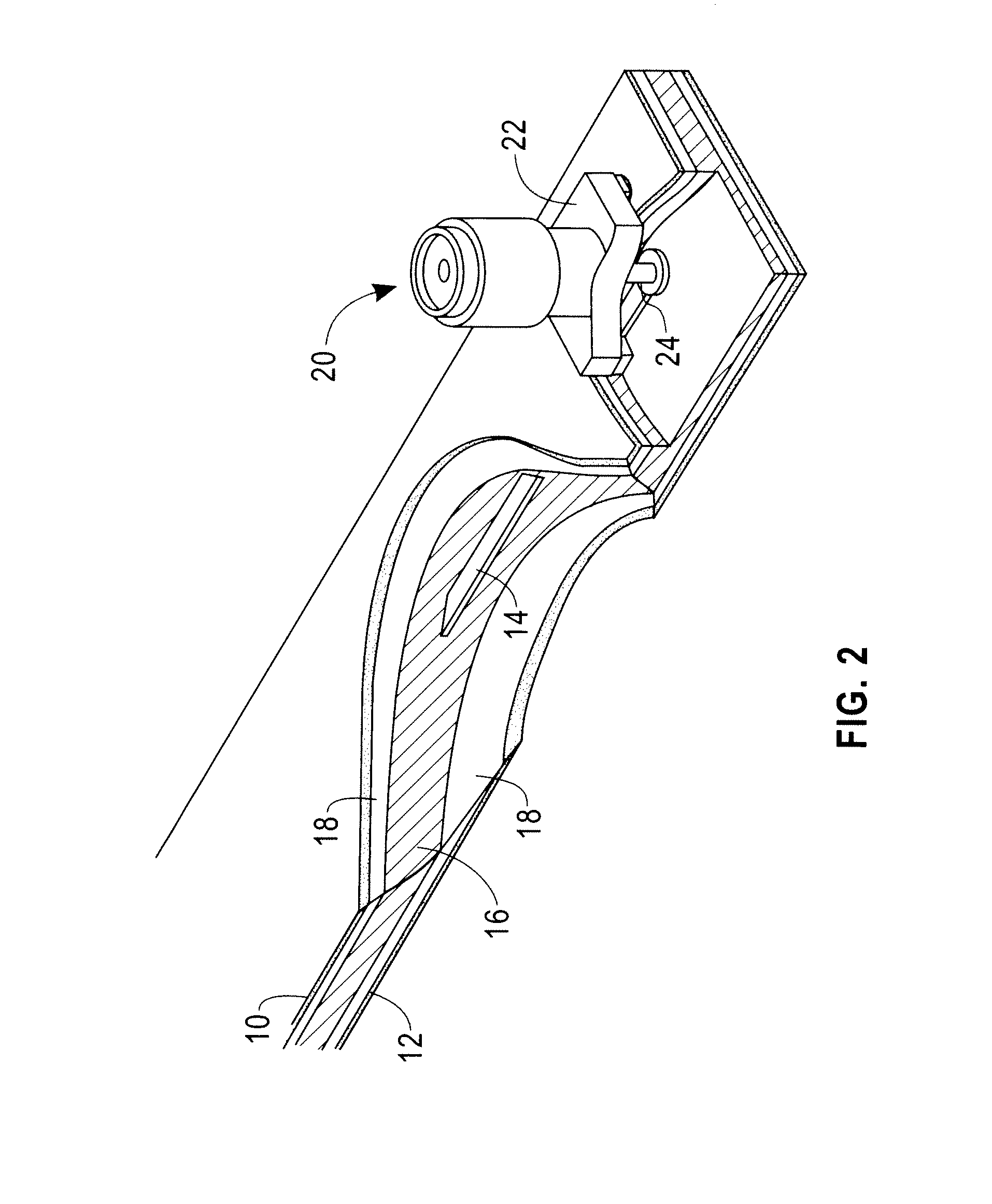Fixed impedance low pass metal powder filter with a planar buried stripline geometry
a metal powder filter and low-pass technology, applied in the field of quantum computation, can solve the problems of qubits changing states erroneously, needing some schemes, and effects of decoherence, and achieves the effects of easy scaling and integration, easy fabrication of fixed characteristic impedance, and easy scaling and integration
- Summary
- Abstract
- Description
- Claims
- Application Information
AI Technical Summary
Benefits of technology
Problems solved by technology
Method used
Image
Examples
Embodiment Construction
[0016]In our qubit experiments, one or more electrical lines transmit very fast shaped pulses. The measurements setup is designed to be 50Ω everywhere since any impedance mismatches will affect the shaped pulse. The room temperature electronics are a source of noise, and therefore these fast lines include metal powder filters located at low temperatures. The filters are designed to have a 50Ω characteristic impedance.
[0017]Referring now to the drawings, and more particularly to FIG. 1, there is illustrated a cross-sectional view of the new low pass metal powder filter according to the present invention. Layers 10 and 12 are copper ground planes, and the middle copper line 14 is the buried stripline. The regions in between the ground planes 10 and 12 and the buried stripline 14 are dielectric material. The region 16 in the vicinity of the stripline 14 is a region of composite matrix with a high percentage of metal powder. In the preferred embodiment of the invention, the metal powder...
PUM
| Property | Measurement | Unit |
|---|---|---|
| impedance | aaaaa | aaaaa |
| impedance | aaaaa | aaaaa |
| impedance | aaaaa | aaaaa |
Abstract
Description
Claims
Application Information
 Login to View More
Login to View More - R&D
- Intellectual Property
- Life Sciences
- Materials
- Tech Scout
- Unparalleled Data Quality
- Higher Quality Content
- 60% Fewer Hallucinations
Browse by: Latest US Patents, China's latest patents, Technical Efficacy Thesaurus, Application Domain, Technology Topic, Popular Technical Reports.
© 2025 PatSnap. All rights reserved.Legal|Privacy policy|Modern Slavery Act Transparency Statement|Sitemap|About US| Contact US: help@patsnap.com



